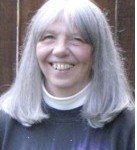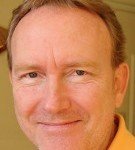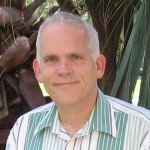Welcome to Yang-Sheng! 《養生》欢迎您!
Yang-Sheng (Nurturing Life; ISSN: 2326-277X) is an E-magazine and a network for all healthcare professionals of preventive medicine, practitioners of mind-body exercise (such as meditation, Qigong, Tai Chi, Yoga, Reiki, and mindfulness), true health seekers, and spiritual cultivators. It promotes philosophy and methods of self-healing, positive mind and health preservation, and shares knowledge and experiences with those who are interested in the subjects and their applications in everyday life.
Yang-Sheng merges traditional life-nurturing knowledge with modern scientific research and clinic evidence, and combines ancient wisdom with our own experience to support our daily practice and well-being, and to reach true meaning of health in body, mind and spirit… Your contribution, participation, sharing and suggestions are truly appreciated.
Read This issue of Yang-Sheng as a flip book.
Click here to download Yang-Sheng as PDF
Highlights of Current Issue of Yang-Sheng (Vol 4, No 2)
 [From the Editor] Our editor-in-chief gives quick introduction to this issue with the theme “Yin-Yang” (阴阳), and offers you a unique perspective on Yin-Yang and health.
[From the Editor] Our editor-in-chief gives quick introduction to this issue with the theme “Yin-Yang” (阴阳), and offers you a unique perspective on Yin-Yang and health.
[Qi Cultivation & Dao] Chinese Astrology: Green (Wood) Horse Year by Michael Winn — Michael’s observations are already coming true for me personally! “The Female Water Snake Year 2013 was about digging up deep unconscious personal patterns and bringing them into the Light so they can be shed, like an old skin, by our wise inner Snake. This Yang Wood Horse Year promises to give us a yang boost in manifesting our newly cleansed selves – BUT ONLY IF WE CHOOSE TO ALIGN WITH THAT POTENTIAL.”
— Michael’s observations are already coming true for me personally! “The Female Water Snake Year 2013 was about digging up deep unconscious personal patterns and bringing them into the Light so they can be shed, like an old skin, by our wise inner Snake. This Yang Wood Horse Year promises to give us a yang boost in manifesting our newly cleansed selves – BUT ONLY IF WE CHOOSE TO ALIGN WITH THAT POTENTIAL.”
 [The Dancing Doc] Yin and Yang: Unify to Create Daily Orgasm – Sharon Montes reveals that “orgasm offers a perfect model of yin/yang and Tao. Orgasm offers the physical experience of unity, although it is the result of a balance of duality. Genital stimulated orgasm results after intense sympathetic activity (the yang-like aspect of our nervous system) followed by a flood of parasympathetic activity (the yin-like aspect of our nervous system).” She then relates this to being fully conscious in the moment.
[The Dancing Doc] Yin and Yang: Unify to Create Daily Orgasm – Sharon Montes reveals that “orgasm offers a perfect model of yin/yang and Tao. Orgasm offers the physical experience of unity, although it is the result of a balance of duality. Genital stimulated orgasm results after intense sympathetic activity (the yang-like aspect of our nervous system) followed by a flood of parasympathetic activity (the yin-like aspect of our nervous system).” She then relates this to being fully conscious in the moment.
 [Experience Exchange] Can You Grasp The Sparrow’s Tail? By Bob McBrien and Natasha Shangold shows how taiji is not only about movement, but also about stillness, and the insights they gain into the Tao Te Ching when mindful awareness of correct alignment, diaphragmatic breathing, and an inner feeling of harmony is experienced.
[Experience Exchange] Can You Grasp The Sparrow’s Tail? By Bob McBrien and Natasha Shangold shows how taiji is not only about movement, but also about stillness, and the insights they gain into the Tao Te Ching when mindful awareness of correct alignment, diaphragmatic breathing, and an inner feeling of harmony is experienced.
 [Feature Article] What is Yin Yang by Casey Kochmer, opens with a starting definition: The nature of change, balanced as two halves of a whole. However, a clearer understanding of Yin and Yang requires looking back into the Tao which can be considered as the fundamental absolute. Upon examination: the nature of the Tao expands out, and Yin and Yang is the point where perception demarks the Tao’s expansion from one into two.
[Feature Article] What is Yin Yang by Casey Kochmer, opens with a starting definition: The nature of change, balanced as two halves of a whole. However, a clearer understanding of Yin and Yang requires looking back into the Tao which can be considered as the fundamental absolute. Upon examination: the nature of the Tao expands out, and Yin and Yang is the point where perception demarks the Tao’s expansion from one into two.
 [Meditation in Motion] Manifesting Yin and Yang in Taiji By Eric Borreson discusses how one of the fundamental principles of tai chi is that we start in wu ji, or neutral emptiness and, as you begin to move, wu ji separates into the yin and yang that your body manifests throughout the forms.
[Meditation in Motion] Manifesting Yin and Yang in Taiji By Eric Borreson discusses how one of the fundamental principles of tai chi is that we start in wu ji, or neutral emptiness and, as you begin to move, wu ji separates into the yin and yang that your body manifests throughout the forms.
 [Scientific Qi Exploration] The Divergent or Distinct Meridians (Part 2) by Marty Eisen, continues the explanation of these Meridians which usually are not used to treat functional problems or energetic disturbances, but disorders of a material basis that can be detected by examination of biopsied tissues, laboratory specimens, x-ray or nuclear medicine studies. They can be used as a first approach to acute problems before surgical or pharmaceutical therapies are initiated, as an adjunct to the conventional treatment or after the medical treatment has failed.
[Scientific Qi Exploration] The Divergent or Distinct Meridians (Part 2) by Marty Eisen, continues the explanation of these Meridians which usually are not used to treat functional problems or energetic disturbances, but disorders of a material basis that can be detected by examination of biopsied tissues, laboratory specimens, x-ray or nuclear medicine studies. They can be used as a first approach to acute problems before surgical or pharmaceutical therapies are initiated, as an adjunct to the conventional treatment or after the medical treatment has failed.
 [Spirituality of Dao] Yin Yang You a poem By Raven Cohan — “Yin and Yang. You are that. That is you. Yes it’s you.”
[Spirituality of Dao] Yin Yang You a poem By Raven Cohan — “Yin and Yang. You are that. That is you. Yes it’s you.”
 [Energy Healing Through Science & Spirit] The Chakras Part I: How the Rainbow Colors came to be by Cindy Cicero, traces the development of chakra knowledge from beginnings in traditional, ancient Indian culture as taught in the sacred books the Upanishads though modern, New Age attributes and uses.
[Energy Healing Through Science & Spirit] The Chakras Part I: How the Rainbow Colors came to be by Cindy Cicero, traces the development of chakra knowledge from beginnings in traditional, ancient Indian culture as taught in the sacred books the Upanishads though modern, New Age attributes and uses.
 [Seasonal Harmony] Early Summer – Blossoming By Ellasara Kling, leads us in being in harmony and balance with the summer season through Five Element Theory of Chinese Medicine and mouth-watering recipes for keeping cool in the heat of summer: Watermelon-ginger juice, Yellow Squash/Red Pepper Congee, and Dandelion/Sweet Potato Soup, to name just a few!
[Seasonal Harmony] Early Summer – Blossoming By Ellasara Kling, leads us in being in harmony and balance with the summer season through Five Element Theory of Chinese Medicine and mouth-watering recipes for keeping cool in the heat of summer: Watermelon-ginger juice, Yellow Squash/Red Pepper Congee, and Dandelion/Sweet Potato Soup, to name just a few!
 [East-West Perspective] Yin, Yang, and Work Life Balance by Peter Morgan– These two energies cause everything to happen. Yang is the masculine principle, and evokes words like active, creative and hard. Yin is the feminine: passive, receptive and soft. The key belief is that one cannot exist without the other!
[East-West Perspective] Yin, Yang, and Work Life Balance by Peter Morgan– These two energies cause everything to happen. Yang is the masculine principle, and evokes words like active, creative and hard. Yin is the feminine: passive, receptive and soft. The key belief is that one cannot exist without the other!
 [Research Updates] Mind-Body Medicine Research Updates, compiled by Kevin W Chen, gives research and completed study results on the benefits of meditation, qigong, tai chi, taiji, and yoga on pain management, creativity stimulation, memory, and the ability to concentrate among other topics.
[Research Updates] Mind-Body Medicine Research Updates, compiled by Kevin W Chen, gives research and completed study results on the benefits of meditation, qigong, tai chi, taiji, and yoga on pain management, creativity stimulation, memory, and the ability to concentrate among other topics.
Click here to download Yang-Sheng as PDF

![]() Click HERE to subscribe to FREE monthly update
Click HERE to subscribe to FREE monthly update
- You are welcome to share Yang-Sheng with your friends in its original form.
- To contribute to Yang-Sheng or contact us, please email to editor@yang-sheng.com


One Response to March/April 2014